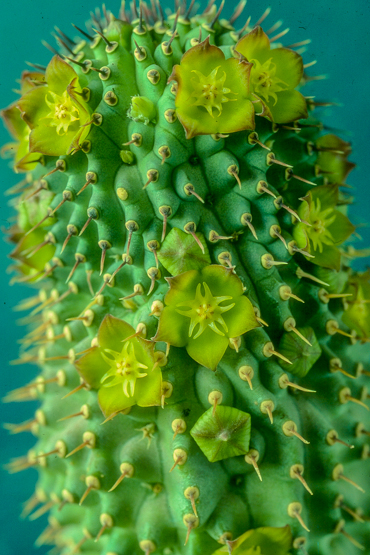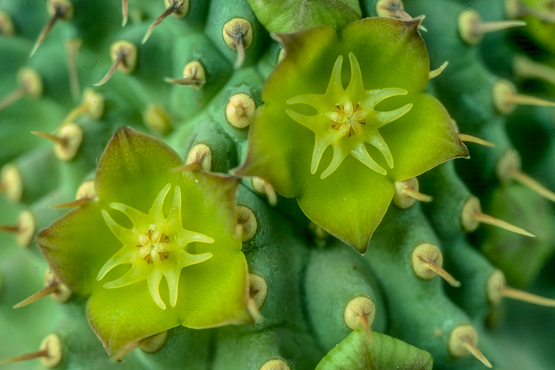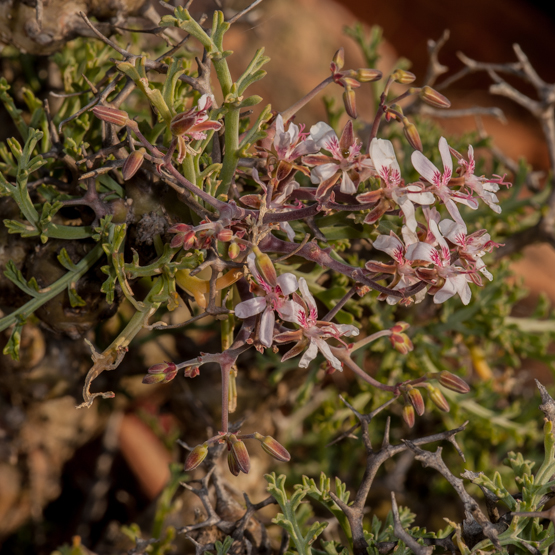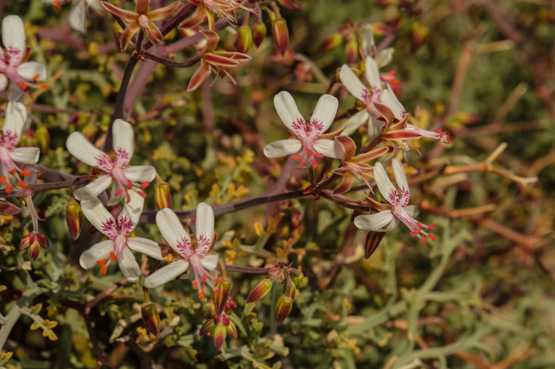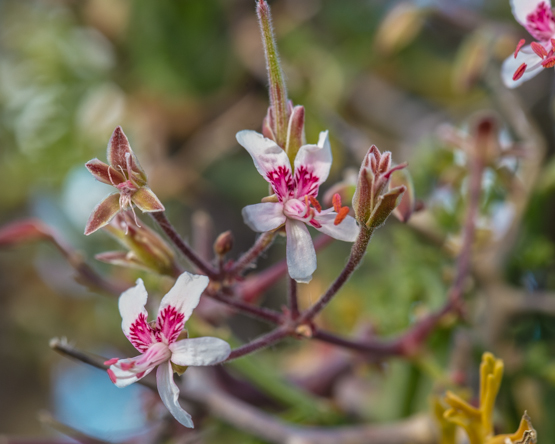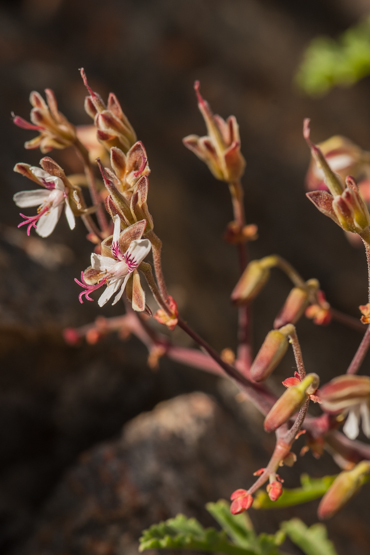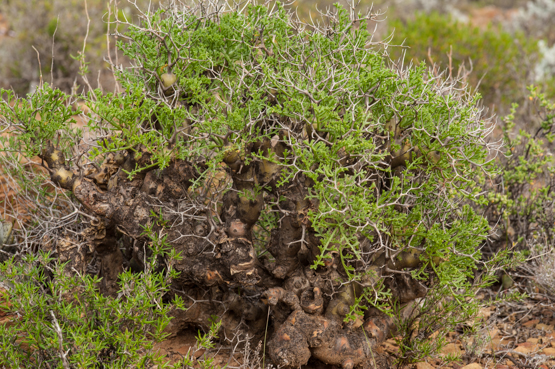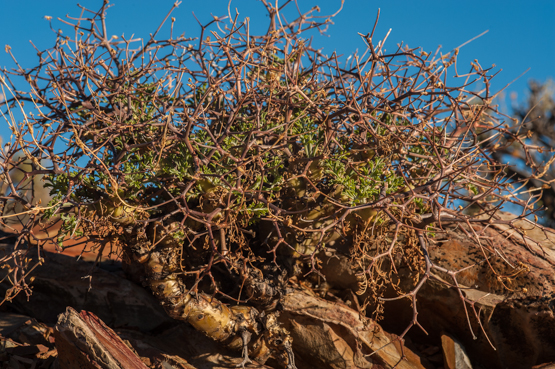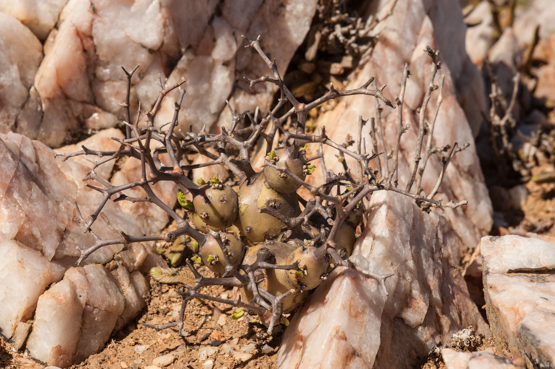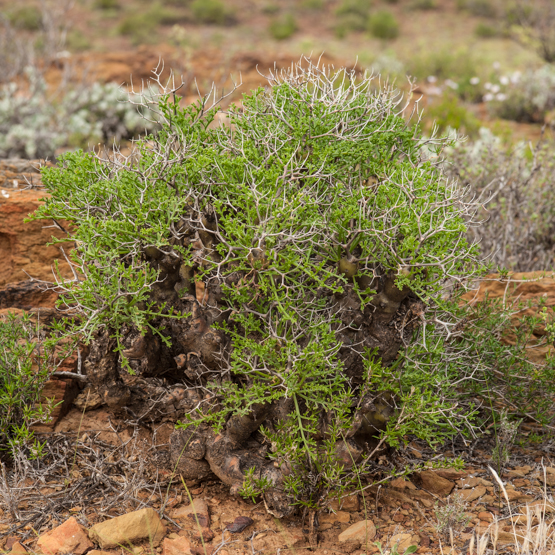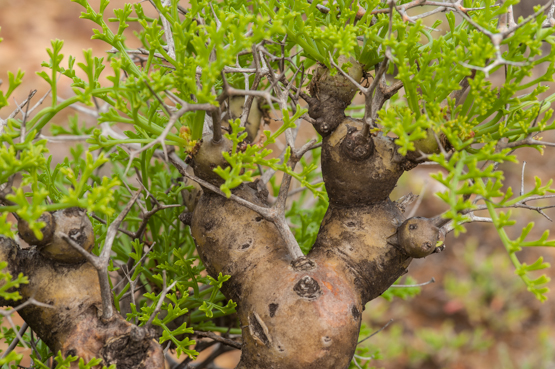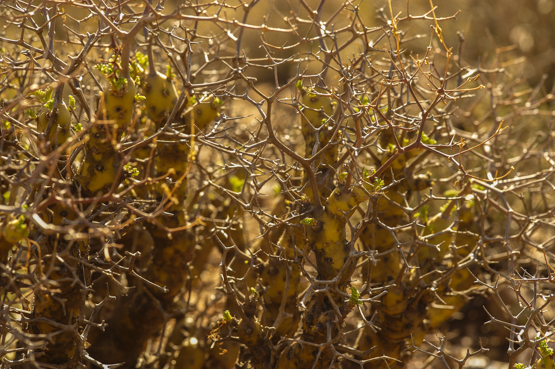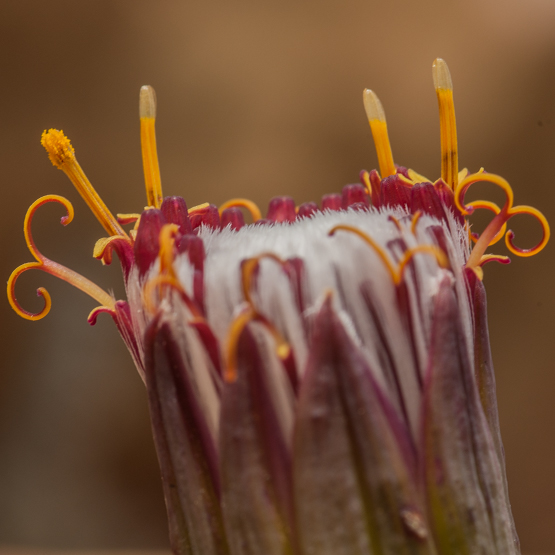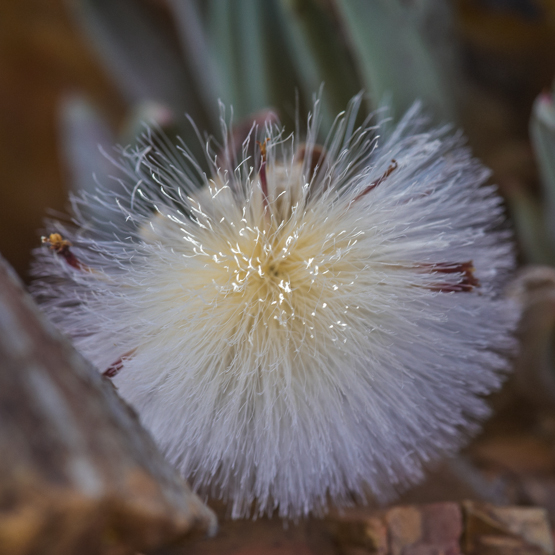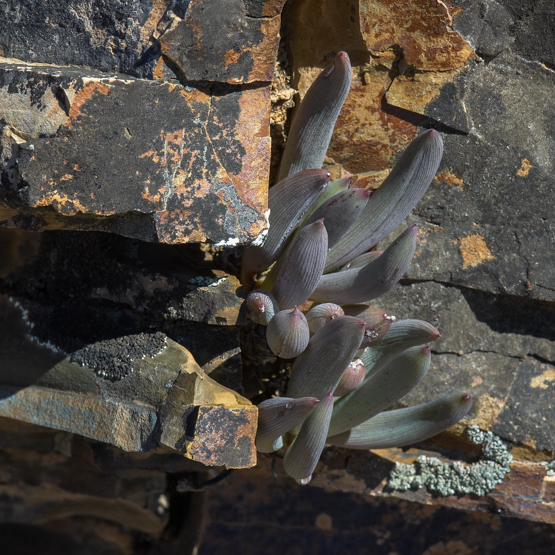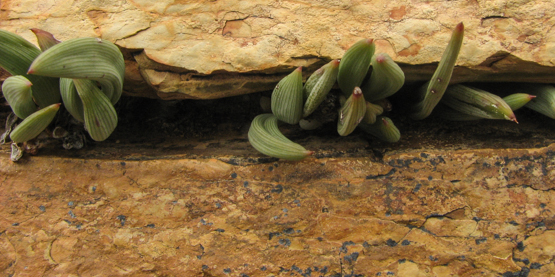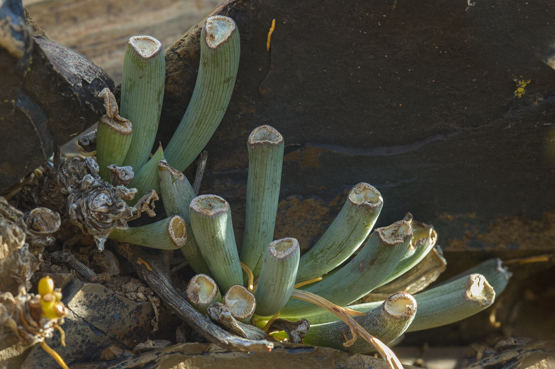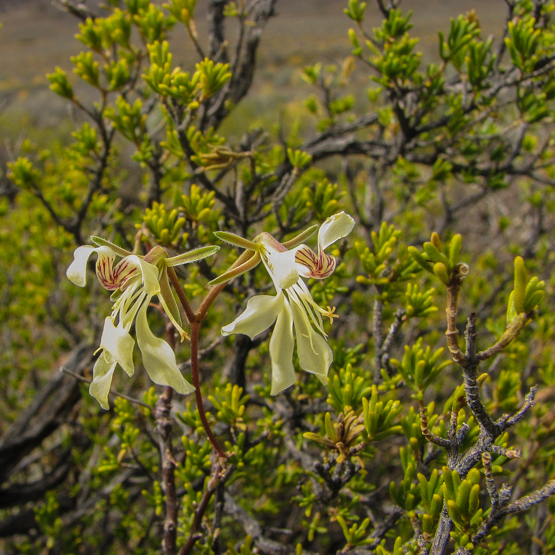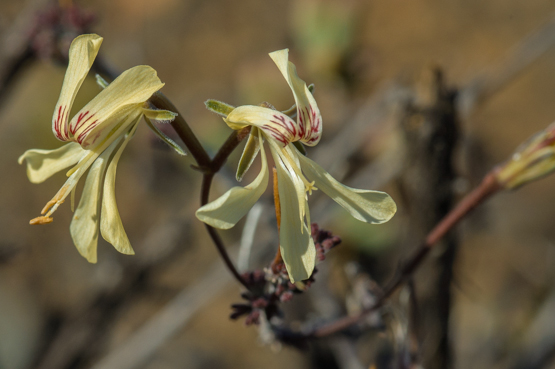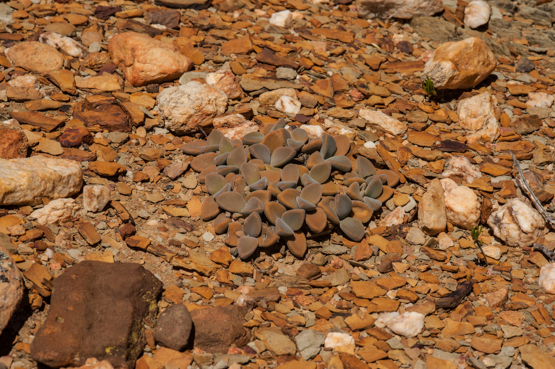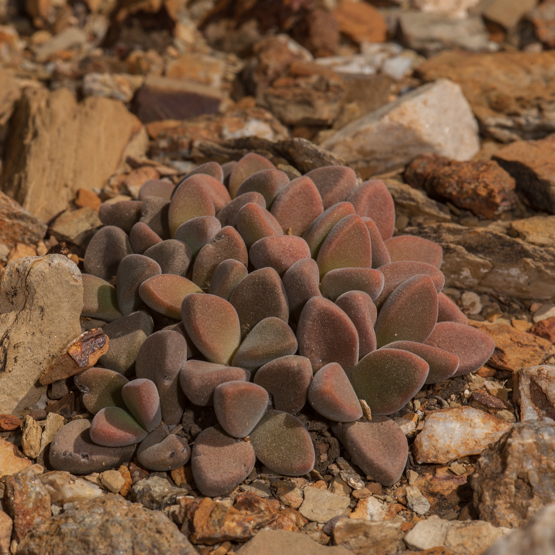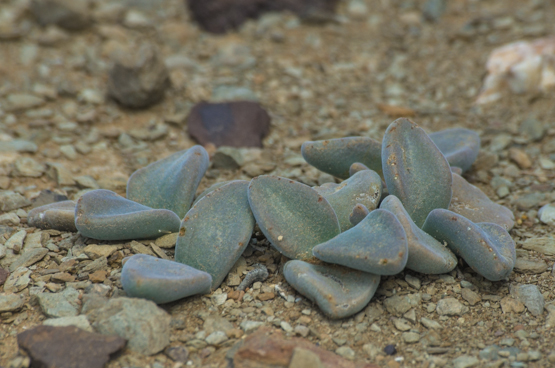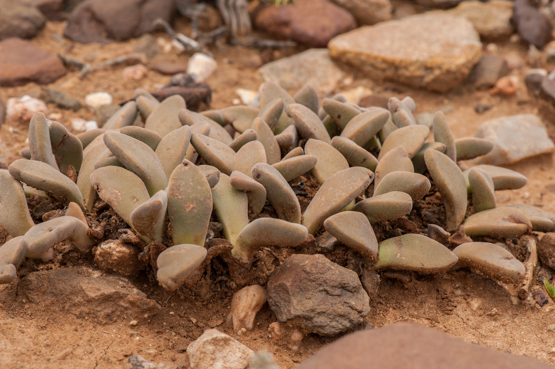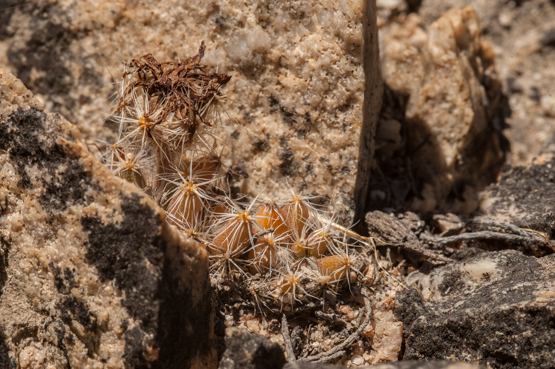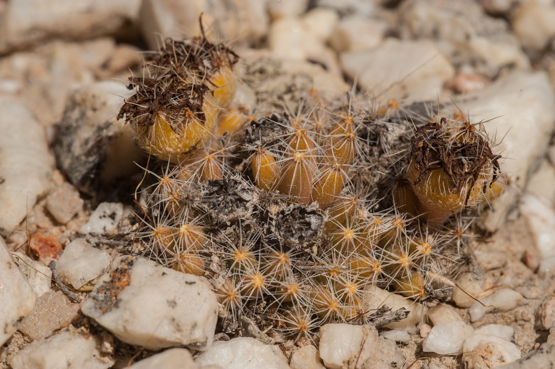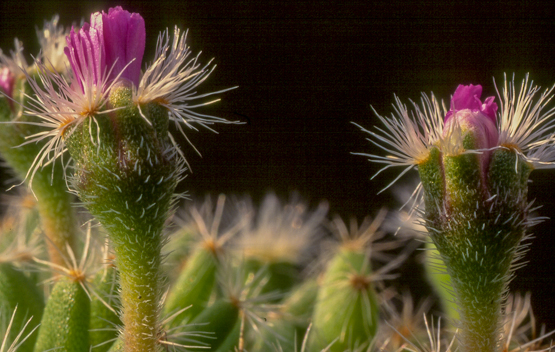Although these plants may reach a height of 50 cm, they are usually much smaller.
They occur in a few places in southern Namibia and around Pofaddder in Bushmanland, but the majority of them are found from Calvinia to Carnavon in the central Great Karoo and southwards as far as Prince Albert and Rietbron. They often grow inside bushes, especially those of spiny Ruschias.
The plants in habitat were photographed south of Pofadder, the other ones in cultivation.
Tag: Great Karoo
Pelargonium crithmifolium (3)
Pelargonium crithmifolium (2)
In the preceding post I mentioned the persisting inflorescences that are so characteristic of this species. When you look back at that post you will notice that even young plants produce them.
One cannot help but wonder what purpose these outgrowths serve apart from the obvious one: supporting the flowers and fruits (which could be done with a far less complicated and heavy structure). We have to bear in mind that these plants live in difficult circumstances and cannot afford unnecessary extravagances. In other words, there must be a proper return on investment and the best return would be one that helps the plants to survive.
To my mind, the persisting inflorescence has three functions:
— It keeps browsing predators away.
— It helps shade the plant and thereby lower the temperature.
— The intricate structure of branches diminishes the speed of the usually hot and desiccating wind.
It is interesting that these functions have their strongest influence at the place where they are most helpful: the growing tips of the stems, with their soft and tender young leaves.
More pictures to follow.
Pelargonium crithmifolium (1)
With its thick stems and a height of up to 1 meter, this species is one of the giants among the succulent Pelargoniums. Only P. carnosum is occasionally taller (up to 1.2 m). The species is characterized by its large, much branched inflorescences which become hard and spine-like and will persist for at least a year. The flowers appear from March to November.
The plants occur sporadically from southern Namibia to the western Great Karoo and the Little Karoo on dry, hot flats and slopes, often in crevices of rocky outcrops.
Senecio acaulis (2)
Senecio (Curio) acaulis. Part 1
These plants may be up to 30 cm tall but are usually much lower.
The leaves are up to 10 cm long and cylindrical (in the dry season they become flattened). Apparently they are tasty to some animals, as one often sees them with the upper half chewed off.
The flowers appear in Oct. Nov. and are large and showy (up to over 2 cm in diameter).
The species occurs on rocky outcrops from the Ceres Karoo to the Kouga Mts.
Pelargonium karooicum
“This species has little horticultural appeal, always looking as if it were more than half dead.”
How about that for a recommendation? It comes from “Pelargoniums of Southern Africa” vol. 3. and yes, if you have space for just one more Pelargonium in your collection, this will not be high on your wants list.
But if you are in the field somewhere between January and April, when very little else is flowering, the white, pale yellow or pink flowers sticking out from a shrub, are a welcome sight.
The plants are shrublets of up to 40 cm tall. with thin, slightly woody stems and parsley-like, somewhat succulent leaves. The species is widely distributed from the vicinity of Kleinzee in Namaqualand to Oudtshoorn in the eastern Little Karoo. This is part of the winter rainfall area, with very hot summers and cool, but mainly frost free winters. Without flowers the plants are difficult to find, as they are always growing within other shrubs.
Deilanthe peersii (2)
Deilanthe peersii (1)
Deilanthe comprises only three species and is usually incorporated in Aloinopsis.
D. hilmarii has erect leaves about as wide as thick.
D. peersii and D. thudichumii have more spreading and much wider leaves. They are in fact so similar that the Illustrated Handbook of Succulent Plants tells us that they are distinguished only by
–1 the fact that the flowers of D. thudichumii are open between 3 p.m. and 9 p.m. and those of D. peersii between 8 p.m. to 2 a.m.
— 2 some differences in flower morphology
— 3 different pollinators.
Not surprisingly, the book also suggests that D. thudichumii “may therefore be better placed as a subspecies in D. peersii”.
D. peersii, like its siblings, produces a very fat rootstock with quite short stems, each forming only one pair of velvety leaves per season. The plants occur from Laingsburg in the southwest to Fauresmith in the northeast. The rainfall is mostly in summer.
Although the species is widespread, it is not well known. It is probably often overlooked because the plants are low on the ground and the dark grey or brownish leaves are similar to the surrounding shale.
The first picture was taken near the eastern entrance to the Anysberg Nature Resereve (26 Sept. 2006). The other two show plants growing next to the road from Klaarstroom to Willowmore, just east of the provincial border (26 Dec. 2012).
Trichodiadema densum
It is easy to see why this species is so popular in cultivation. The plants are compact (the most compact of the whole genus) and have thick fleshy roots.
The diadems at the tips of the leaves are the largest of all Trichodiademas and the flowers (appearing in winter and spring: June- October) are 4-5 cm in diameter.
One can come across the plants from Uniondale to Willowmore and the southern Great Karoo, where they mainly grow in white quartz fields.
The last picture shows a plant in cultivation (scan from slide)


